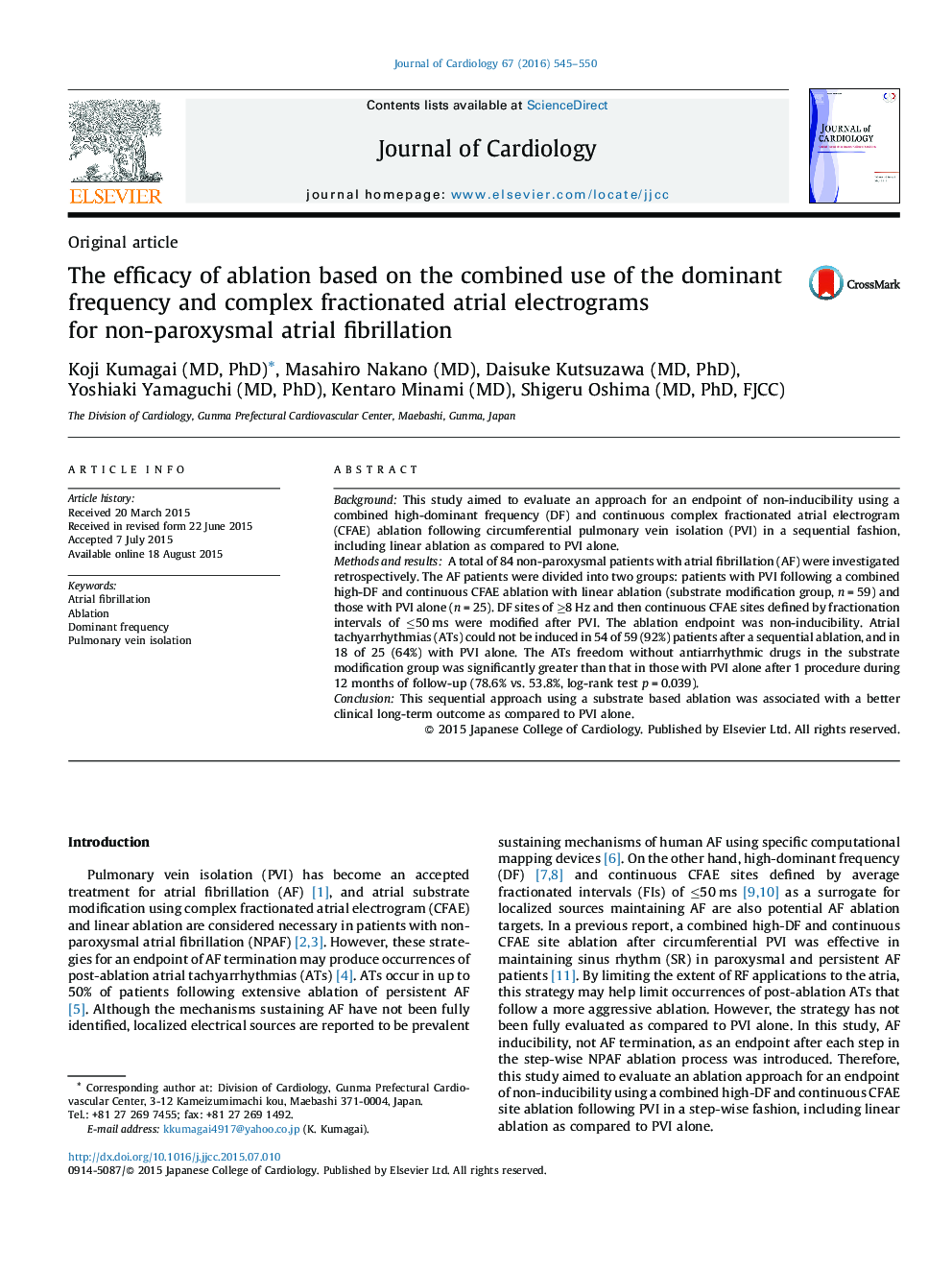| Article ID | Journal | Published Year | Pages | File Type |
|---|---|---|---|---|
| 2962723 | Journal of Cardiology | 2016 | 6 Pages |
BackgroundThis study aimed to evaluate an approach for an endpoint of non-inducibility using a combined high-dominant frequency (DF) and continuous complex fractionated atrial electrogram (CFAE) ablation following circumferential pulmonary vein isolation (PVI) in a sequential fashion, including linear ablation as compared to PVI alone.Methods and resultsA total of 84 non-paroxysmal patients with atrial fibrillation (AF) were investigated retrospectively. The AF patients were divided into two groups: patients with PVI following a combined high-DF and continuous CFAE ablation with linear ablation (substrate modification group, n = 59) and those with PVI alone (n = 25). DF sites of ≥8 Hz and then continuous CFAE sites defined by fractionation intervals of ≤50 ms were modified after PVI. The ablation endpoint was non-inducibility. Atrial tachyarrhythmias (ATs) could not be induced in 54 of 59 (92%) patients after a sequential ablation, and in 18 of 25 (64%) with PVI alone. The ATs freedom without antiarrhythmic drugs in the substrate modification group was significantly greater than that in those with PVI alone after 1 procedure during 12 months of follow-up (78.6% vs. 53.8%, log-rank test p = 0.039).ConclusionThis sequential approach using a substrate based ablation was associated with a better clinical long-term outcome as compared to PVI alone.
